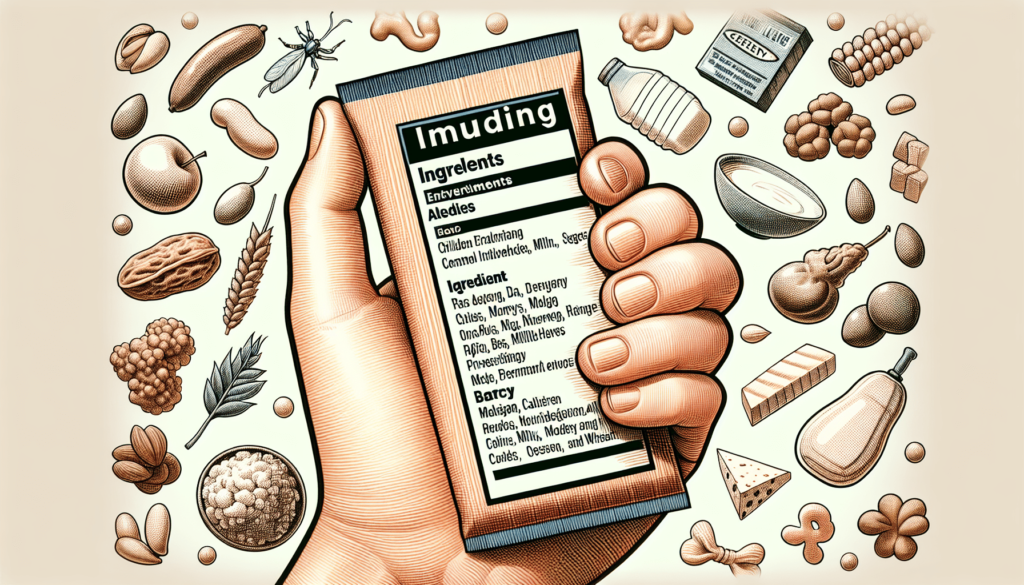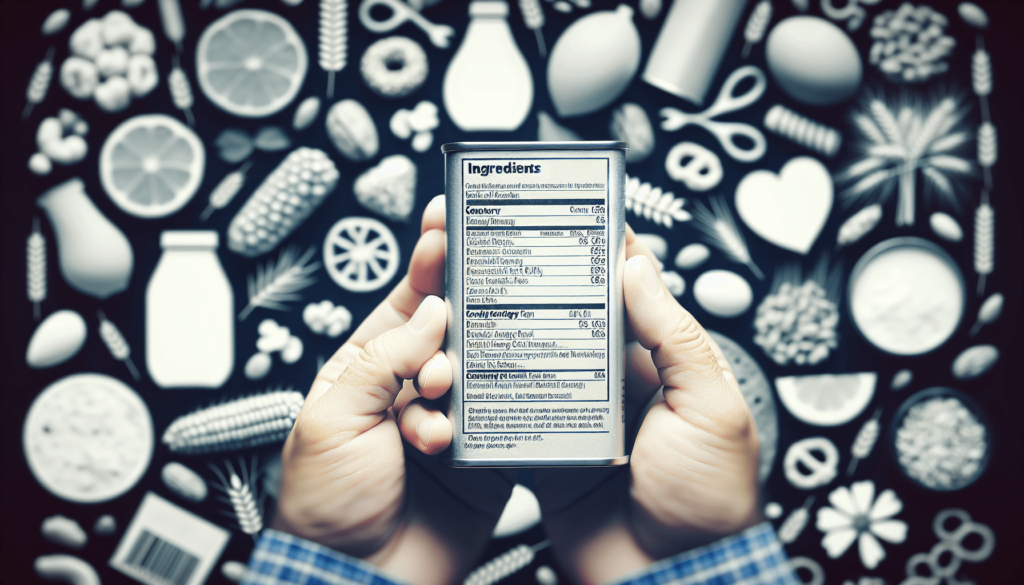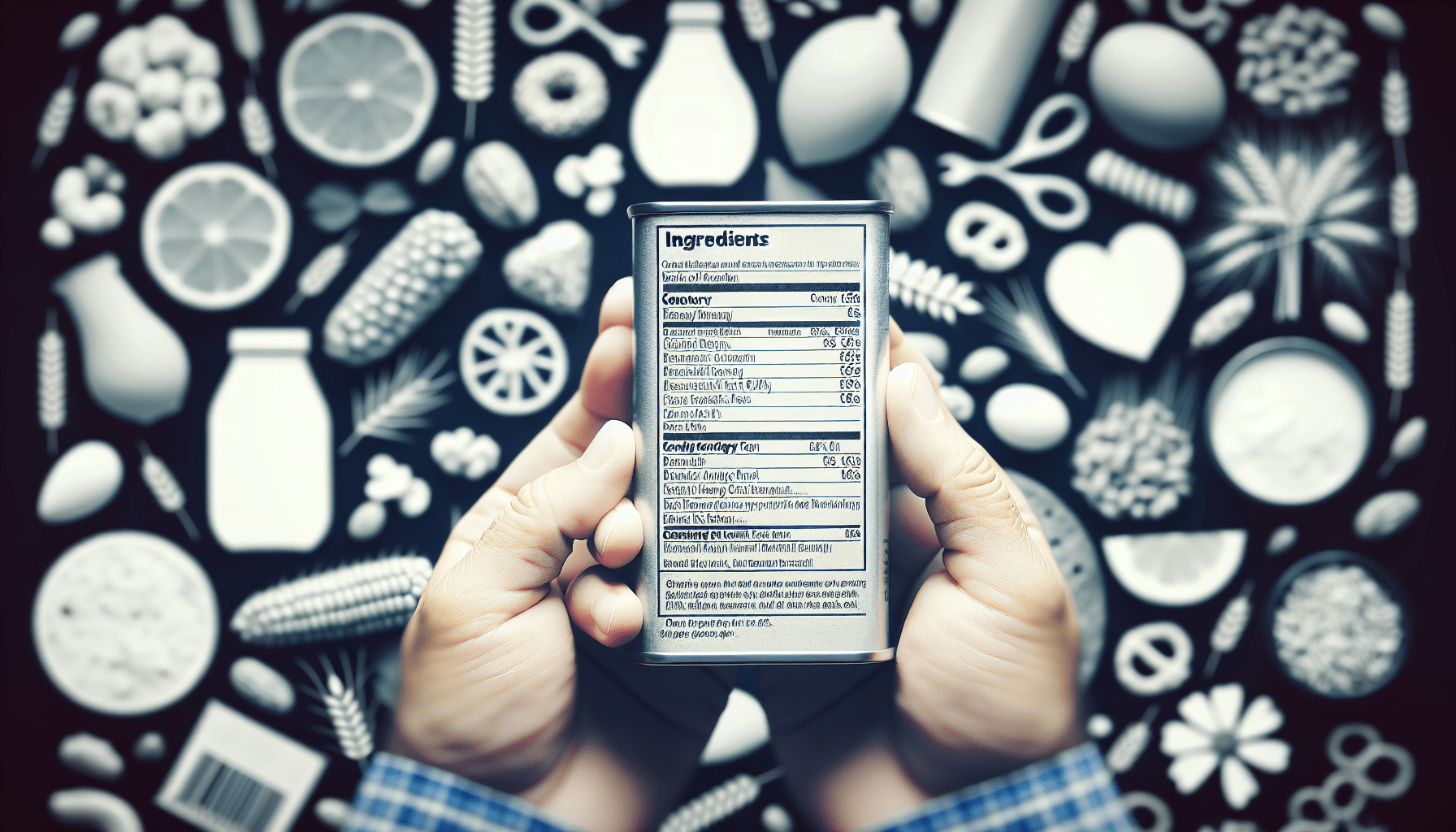Do you worry every time your child reaches for a new snack or eats something off a friend’s plate? When your child has allergies, especially food allergies, it can feel like you’re navigating a constant minefield of potential risks. Understanding how to read food labels isn’t just helpful; it’s a vital skill that contributes significantly to your child’s health and well-being.

Child Allergy: The Basics
What Are Allergies?
Allergies occur when the immune system reacts to a foreign substance—called an allergen—that’s harmless to most people. These allergens can include pollen, dust mites, pet dander, and certain foods. For children, food allergies are especially common and can manifest in a variety of symptoms.
Identifying Common Food Allergies
Some of the most common food allergies in children include reactions to:
| Allergen | Common Foods |
|---|---|
| Milk | Cheese, yogurt, butter, ice cream |
| Eggs | Baked goods, mayonnaise, some pastas |
| Peanuts | Peanut butter, baked goods, sauces |
| Tree nuts | Almonds, walnuts, cashews |
| Soy | Soybean oil, tofu, some infant formulas |
| Wheat | Bread, pasta, cereal |
| Fish | Salmon, tuna, fish sticks |
| Shellfish | Shrimp, crab, lobster |
These allergens can sneak into your child’s diet in unexpected ways, making reading food labels critically important.
Why Reading Food Labels is Crucial
Understanding Labeling Laws
Manufacturers are legally required to list certain allergens on food labels due to directives from regulatory bodies like the FDA. The labels must clearly state if any of the eight most common allergens are present in the food. Knowing how to read and interpret these labels can prevent allergic reactions and ensure your child eats safely.
Hidden Ingredients
Food products can contain hidden allergens. Terms like “natural flavors” or “spices” can be vague and might include allergens. By understanding how to read labels, you can better protect your child from inadvertent exposure to allergens.
How to Read Food Labels
Identify Key Areas on the Label
Labels generally have several key areas where you can find allergen information:
- Ingredients List: This is where you’ll find a detailed breakdown of everything in the product.
- Contains Statements: This section highlights the major allergens present in the product.
- May Contain Statements: Indicates possible cross-contamination with allergens during manufacturing.
Understanding Allergen Statements
Manufacturers use specific phrases to communicate the presence of allergens. Here’s a breakdown:
| Statement Type | Meaning |
|---|---|
| “Contains” | The product includes the allergen listed. |
| “May contain” | There is a risk of cross-contamination during production. |
| “Processed in a facility that also processes” | Product could be contaminated with the allergens listed. |
Decoding Ingredient Lists
Even if the allergen isn’t clearly mentioned under “contains” or “may contain,” it might still be in the ingredients list under another name. Here’s how to spot common allergens:
| Allergen | Possible Ingredient Names |
|---|---|
| Milk | Casein, whey, lactose |
| Eggs | Albumin, globulin, egg powder |
| Peanuts | Ground nuts, arachis oil |
| Tree nuts | Nut meats, almond paste, marzipan |
| Soy | Soy protein, edamame, textured vegetable protein |
| Wheat | Gluten, farina, semolina |
| Fish | Fish sauce, anchovy |
| Shellfish | Shellfish extract, bisque |
Tips for Effective Label Reading
- Double Check: Always read the labels, even if it’s a product you’ve purchased before. Ingredients and formulations can change.
- Look for All Versions: Some allergens have multiple names, so be familiar with all the possible terms.
- Expiry Dates: Keep an eye on expiry dates, as older products may have outdated formulations.
Managing Child Food Allergies
Create an Allergy-Free Zone
Having a designated space in your home free from allergens can help minimize risks. This could be a specific cupboard or refrigerator section where you store allergy-safe foods.
Teach Your Child
Educate your child early about their allergies. Teach them how to identify safe foods and why it’s important to avoid certain items. Encourage them to speak up about their allergies when they’re not with you.
Inform Others
Make sure that anyone who comes into contact with your child is aware of their food allergies. This includes family members, teachers, friends’ parents, and babysitters. Providing them with information on what to look out for and what to do in case of an allergic reaction can be life-saving.

The Role of Schools and Daycares
School Policies
Most schools have policies in place for handling food allergies, which can include:
- Nut-free zones
- Mandatory hand washing after eating
- Food swaps
Education and Communication
Communicate with the school staff about your child’s specific allergies. Provide them with a detailed action plan and any necessary medications, like an EpiPen. Ensure that your child’s teachers and the school nurse know how to handle potential allergic reactions.
Special Events and Parties
School events and parties can be risky. Speak to the event organizers beforehand, ask about the menu, and offer to bring safe alternatives for your child.
Navigating Social Situations
Birthday Parties and Playdates
Social situations are tricky but manageable. Talk to the host in advance and offer to bring safe snacks and treats. Explain your concerns and let them know how they can help keep your child safe.
Dining Out
When dining out, choose restaurants known for accommodating food allergies. Don’t hesitate to ask questions about how food is prepared and if there’s a risk of cross-contamination. Many places have allergen-specific menus or will tailor dishes to meet your child’s needs.
Emergency Preparedness
Recognizing Symptoms
Being able to recognize the symptoms of an allergic reaction is critical. Common symptoms can include:
| Mild Symptoms | Severe Symptoms |
|---|---|
| Rash or hives | Difficulty breathing |
| Stomach pain | Swelling of the face or throat |
| Sneezing | Drop in blood pressure |
| Itchy mouth or ears | Loss of consciousness |
Action Plan
Work with your child’s doctor to create an actionable plan for managing allergic reactions. This plan should include steps for what to do if your child accidentally consumes an allergen, along with emergency contact information and instructions for administering medication.
Emergency Kit
Ensure your child has access to an emergency kit that includes antihistamines and potentially an EpiPen. Train your child, and those around them, on how to use these medications effectively.
Support and Resources
Joining Support Groups
You’re not alone in dealing with food allergies. Joining a support group can provide emotional backing and practical advice. Other parents can share their experiences, tips, and successful strategies for managing everyday challenges.
Consulting Professionals
Regular consultations with pediatricians, allergists, and dietitians can help keep your child’s allergies in check. They can provide updated information and help you adapt to any new developments regarding food allergies.
Online Resources
Several reliable online resources offer comprehensive guides and support for managing food allergies:
- Food Allergy Research & Education (FARE): Provides educational materials, news, and support.
- Kids With Food Allergies (KFA): Offers resources, forums, and emergency plans.
- AllergyHome: Free tools and resources to manage allergies effectively.
Conclusion
Reading food labels and understanding the complexities of managing child food allergies is not merely a precautionary measure; it’s a necessity. With diligence, preparation, and the right information, you can navigate the challenges of food allergies and offer your child a safe and enjoyable life. Ensuring their safety starts with knowing exactly what’s in the food they consume, and mastering the skill of reading labels is an invaluable part of that journey.
By taking these steps, you’re not only protecting your child but also empowering them for a future where they can independently manage their allergies. Through education, communication, and the support of a community, you can help your child lead a happy, healthy, and worry-free life.
